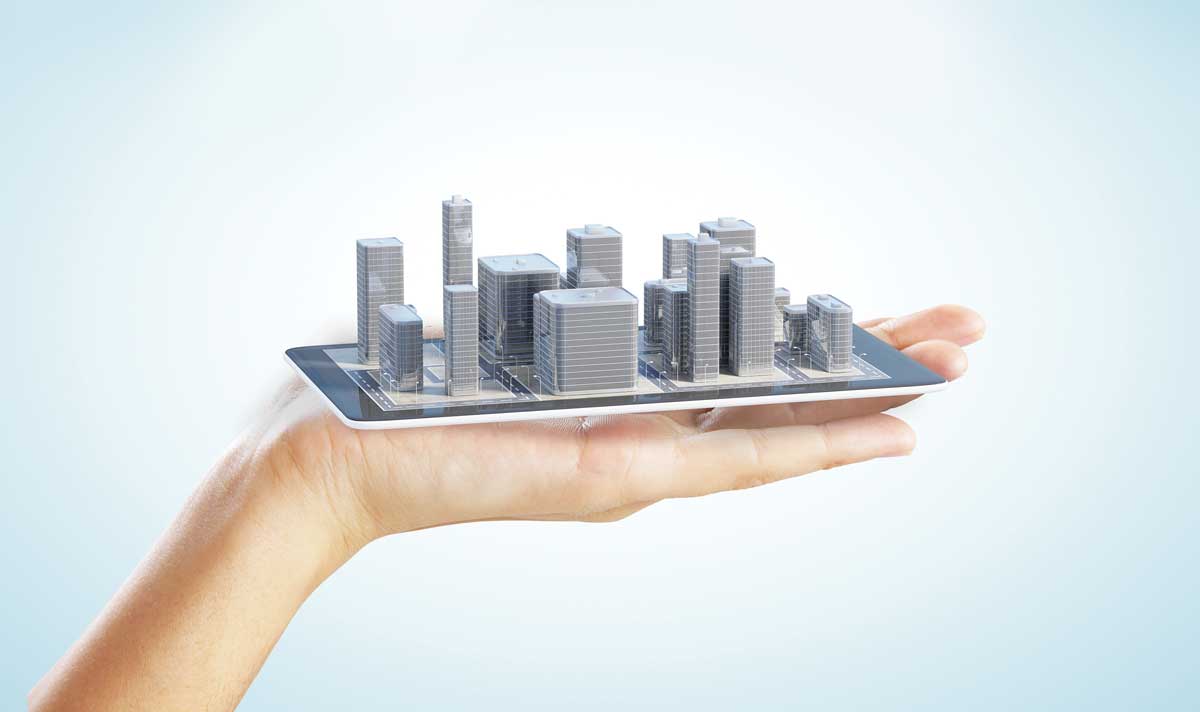
Automation solutions and virtual technologies such as augmented reality (AR) and virtual reality (VR) are completely changing the way Canadian construction organizations and manufacturers interact with customers. Much of this shift is to drive more efficiencies and enhance the overall customer experience. However, as the Covid-19 pandemic continues, these types of technology are also helping companies interact with customers from a distance.
AR technologies offer the ability to present or overlay physical objects, spaces and images virutally on a user’s view of the actual world, and share that augmented viewpoint with others. With increased and expanded mobile device capability, organizations have tremendous potential to interact in 3D with their customers through these devices. Customers can now experience these products virtually and digitally, in a fully immersive interactive journey that feels almost lifelike.
With this capability, the relationship between brand, manufacturer and customer has the chance to strengthen with enhanced value added along the customer journey through research, design, production and now post-sales in customer support.
AR technologies offer the ability to present or overlay physical objects, spaces and images virtually on a user’s view of the actual world, and share that augmented viewpoint with others.
A recent survey reported on TechRepublic found that 56 per cent of businesses have implemented some form of mobile AR/VR technology and another 35 per cent are considering doing so.
Furthermore, a quarter of those surveyed say they have fully deployed solutions and are looking to scale up AR/VR use, especially given the challenges posed by the Covid-19 pandemic.
Virtually demonstrating value before the sale
Even before becoming a customer, virtual technologies can help build the right relationship today. The pre-sale phase involves initiating contact with a prospective customer, identifying their unique needs, formulating an offer, overcoming any objections and closing the sale. For example, an architect or specifications company can now offer virtual designs and blueprints to a facility owner or developer who wants to see the finished product ahead of time.
It is important to engage with the prospect at this time to build rapport, offer proof points and develop confidence to foster a stronger customer journey.
“Try before you buy” visualizations
AR/VR can be effective to help customers not only visualize blueprints or designs, but more specifically, get a glimpse of how those designs will fit into their world. Virtual overlays can demonstrate how a particular home or office design will fit perfectly into a specific development or community.
Virtual customer support post-sales
After the sale is made, the relationship with a customer becomes even more important. Everything from warranties, upgrades and repairs, additional installation and other troubleshooting are often required by the customer – no matter the product or industry. This is where customer loyalty is formulated and cemented as a long-term relationship.
Companies and their manufacturing partners are now developing AR/VR-enabled self-service tutorials and guides to help customers find everything they need at their fingertips. Enhanced technologies like artificial intelligence (AI)-driven solutions are also being used. Through smart devices, customers can quickly access an entire product centre with AI-enabled FAQs, manuals, training materials and detailed videos where AR overlays are used. For example, facility managers can address post-build HVAC designs for questions when implementing smart devices throughout a building.
Today, it’s not just about getting the customer the answer they need. It’s about doing it efficiently and remotely to minimize human touch points as much as possible. Virtual support enables customers to hold up their mobile device to a product to scan and identify each product in real-time by a computer on the other end. Agents and chatbots can immediately identify either a malfunction and its solution, or can easily identify each component that requires replacement, enabling a seamless resolution.
The critical component in all of this is cloud technology which enables manufacturers to access product designs in real-time, or customers to access virtual FAQs, manuals and videos quickly. This easy access is not possible when manufacturers keep all data and records stored at their location, as this type of legacy technology is either too slow to handle real-time interactions or there is not enough space to house all the necessary data.
Customer relationships with brands are quickly evolving, and customer experience is today’s differentiator. Brands have recognized the game-changing abilities of introducing AR into their pre-sales, point of sale and post-sale support operations for the ultimate customer journey. With this type of advanced technology, organizations will develop stronger, more successful, long-term relationships with their customers in a pandemic-safe environment.
Dijam Panigrahi is co-founder and COO of Grid Raster Inc., a leading provider of cloud-based AR/VR platforms that power compelling high-quality AR/VR experiences on mobile devices for enterprises. For more information, visit www.gridraster.com.
